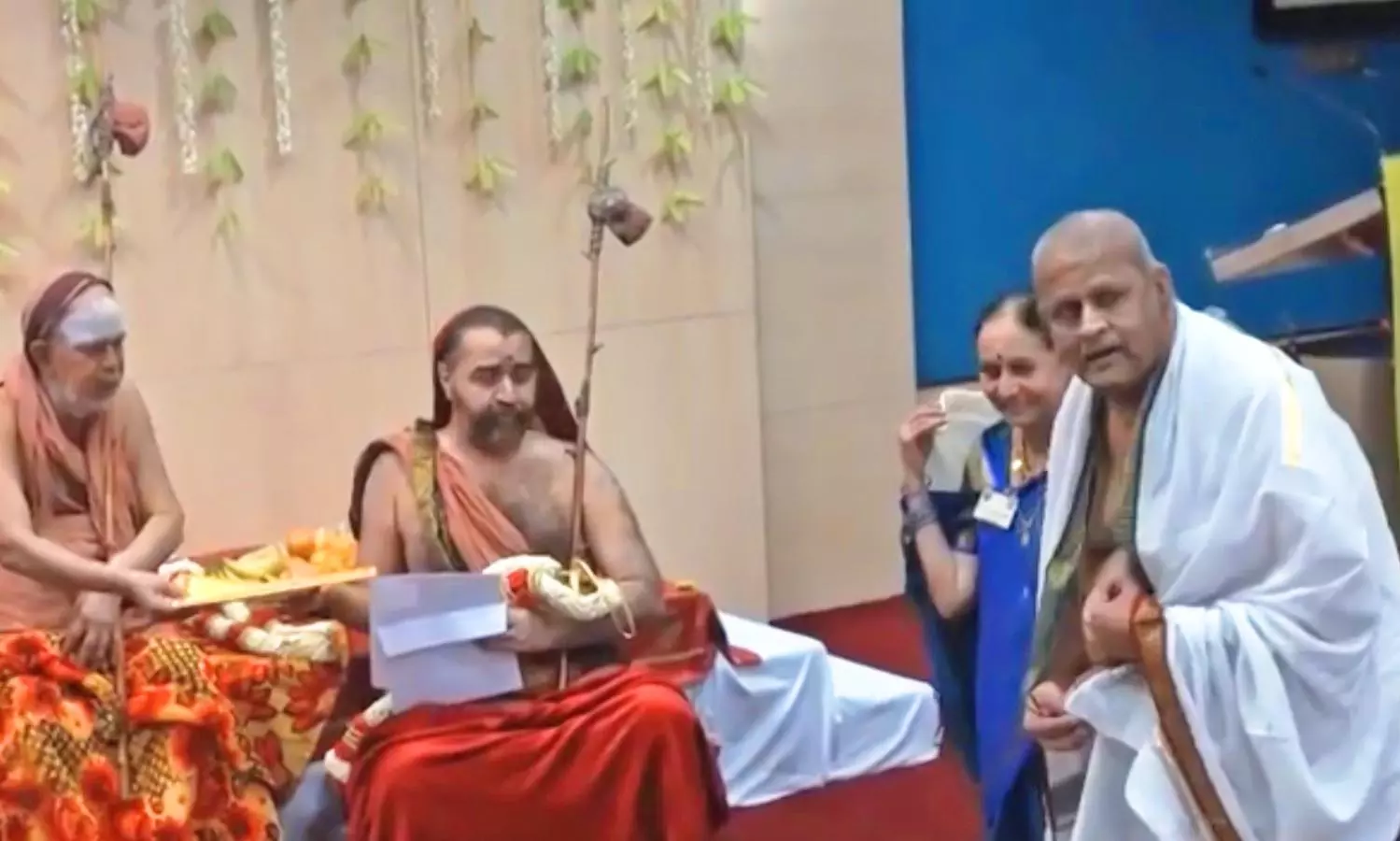
Obituary | When Kanchi Math head did not wet his hair for Dr Badrinath’s sake
Dr Badrinath said many years later that he felt a “change” within him after treating Mahaperiyava, whose successor encouraged him to found a hospital for poor

Back in the 1970s, when Dr Sengamedu Srinivas Badrinath, founder of the Chennai-based Sankara Nethralaya who passed away on Tuesday (November 21), returned to India after getting his ophthalmology degree in the United States, he never thought in his wildest dreams that he would give up his private practice and start a philanthropic effort that would lead the country from dark to light. But a chance encounter with a monk put him on his destined path.
It was 1973. The then chief of Kanchi Math, Sri Chandrasekharendra Saraswathi Swamigal, had developed cataract for the second time. When he had been treated for cataract in his first eye some years previously, the doctor had advised him not to wet his hair while taking a bath so as to prevent any infection in the operated eye.
However, the guru, who was known for performing his daily religious rituals rigorously, shunned the surgeon’s advice, leading to the loss of vision in that eye. Now, the other eye, too, required cataract surgery. His followers insisted that Swamigal should undergo surgery, but he continued to turn down the suggestion for some time, probably due to his previous experience.
A chance encounter
It was then that a devotee, advocate N Krishnamurthy of Mylapore, introduced Dr Badrinath to Swamigal. Dr Badrinath was then associated with Voluntary Health Services, Adyar. After the initial meeting, Krishnamurthy suggested to the Math that Dr Badrinath could treat Mahaperiyava. Dr Badrinath, who had to run some tests on Swamigal’s eye, would travel to the Math from Adyar at 9 pm every evening after finishing his work at VHS.
Finally, the surgery was scheduled for November 1974. The Math imposed many rules on the surgeon — Swamigal should not be operated on at any hospital, the support staff should not come in contact with him, and the like. Accepting all the rules, Dr Badrinath decided to operate on Swamigal by converting a wedding hall near Varadaraja Perumal temple into an operating theatre.
Like the previous surgeon, Dr Badrinath also advised Swamigal not to wet his hair. This time, however, the latter followed his instruction for some weeks after the surgery. Explaining why he followed the surgeon’s advice this time, he told his followers, “He is a doctor. If I develop complications, it will only spoil his name and standing as an eye surgeon.”
A ‘change’ within
Many years later, during an interview by a YouTube channel, Dr Badrinath reminisced about this incident and said he definitely felt a “change” within him after treating Mahaperiyava.
The very next year, Sri Jayendra Saraswathi, the successor of Chandrasekharendra Saraswathi, encouraged Dr Badrinath to found a hospital for the poor. This became instrumental in starting Sankara Nethralaya under the aegis of the Medical Research Foundation in September 1978 with the help of a group of philanthropists.
The book In-Sight: Sankara Nethralaya’s Passion for Compassion authored by VV Ranganathan says how Dr Badrinath created a “common good fund” to prevent hospital staff from asking for tips from patients.
“Most patients who are on top of the moon after getting back their vision insist on expressing their gratitude to the doctors and staff. Dr Badrinath even received a pair of Hawaii slippers once from a poor patient as a token of gratitude. The rule is that the staff should contribute half the cost of the gift that they get to the ‘common good fund’. This is an initiative started by Dr Badrinath. The money collected in the common good fund is distributed among the Class 4 of the employees on the eve of Deepavali or any other auspicious occasion,” the book reads.
The Rajinikanth connection
Talking to The Federal, popular Tamil writer Sivasankari, who became the first Tamil woman writer to win the literary award Saraswati Samman recently for her two-part memoirs Suriyavamsam, said Dr Badrinath was the humblest of persons she ever met.
“One of my articles on eye donation, titled Oli Padaitha Kanninaai Vaa Vaa, was published as a cover story in Ananda Vikatan magazine in 1982. That article encouraged thousands of readers to pledge their eyes. Reading the article, Dr Badrinath wrote a letter to me, saying that I had achieved a feat he had been unable to in the past 25 years. ‘Your article has generated an awareness I have been unable to,’ he wrote,” she said.
The article also encouraged Dr Badrinath to plan a short film on eye donation. Titled Kan Dhaanam (1994), the film starred none other than Rajinikanth and was directed by popular filmmaker SP Muthuraman. The script was penned by Sivasankari. Kan Dhaanam, produced by AVM Studios and sponsored by Nalli Kuppusami for Sankara Nethralaya, has been Rajinikanth’s only short film so far.
